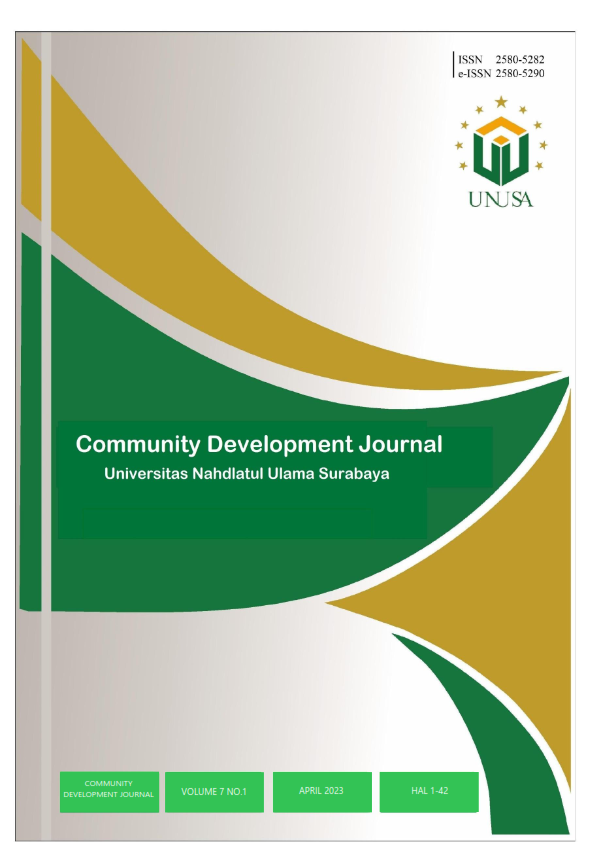Optimize Household Waste Management
##plugins.themes.bootstrap3.article.main##
Abstract
Based on data from the Ministry of Environment and Forestry in 2021, household and food waste production in Indonesia is the highest. This waste has not been utilized optimally because the habit of the Indonesian people in sorting waste is still low. Meanwhile, organic waste derived from food waste can be used as liquid organic fertilizer. Liquid organic fertilizers are more practical and easily absorbed by plants. This community service activity aims to improve students' knowledge and skills in making liquid organic fertilizers. The method used is counseling, demonstration, and training on making LOF involving class XI students of SMAN 8 Malang. This activity results in the increased knowledge and skills of students in manufacturing LOFs. In general, this service activity went smoothly. The suggestion for the next activity was to develop a type of LOF from specific materials based on its largest constituent element so that this LOF will be easier to apply according to to plant needs.
Downloads
##plugins.themes.bootstrap3.article.details##
Copyright (c) 2023 Yunita Rakhmawati, Umi Fitriyati, Ajeng Daniarsih, Farid Akhsani, Wachidah Hayuana, Zahra Firdaus

This work is licensed under a Creative Commons Attribution-ShareAlike 4.0 International License.
References
Amelia, S. et al. (2019) 'Counseling and training on the use of inorganic and organic waste into ecobricks and organic liquid fertilizers various activities such as counseling on organic and inorganic waste and training', Journal of Empowerment: Publication of Community Service Results, 3(3), pp. 341–348.
Goddess, I. K. et al. (2020) 'Journal of Community Service Counseling on the Utilization of Fruit Waste into Organic Liquid Fertilizer to Meet the Needs of Palawija Fruit and Vegetable Farmers in Increasing Family Income in Karang Dadap Village, Kalibagor District, Banyumas – Java T', Journal of Community Service, 1(1), pp. 65–76.
Erickson Sarjono Siboro, Edu Surya and Netti Herlina (2013) 'Making Liquid Fertilizers And Biogas From Vegetable Waste Mixtures', USU Journal of Chemical Engineering, 2(3), pp. 40–43. doi: 10.32734/jtk.v2i3.1448. DOI: https://doi.org/10.32734/jtk.v2i3.1448
Gusti, A., Mahaza, M. and Lindawati, L. (2020) 'Effectiveness of FGD (Focus Group Discussion) Cleaning Service and Combined Cleaning Service with Students in Plastic Waste Management at Poltekkes Kemenkes Padang', Journal of Environmental Health, 10(1), pp. 08–21. doi: 10.47718/jkl.v10i1.1111. DOI: https://doi.org/10.47718/jkl.v10i1.1111
Hidayat, W., Mahmuriyah, R. and Safitri, S. N. R. (2016) 'Catalog-Shaped Visual Media', 2(2), pp. 184–197. DOI: https://doi.org/10.33050/sensi.v2i2.752
Ministry of Environment and Forestry (2021) Waste Composition Chart. Available at: https://sipsn.menlhk.go.id/sipsn/ (Accessed: 30 June 2022).
Meriatna, M., Suryati, S. and Fahri, A. (2019) 'Effect of Fermentation Time and Volume of Bio Activator EM4 (Effective Microorganisme) on The Manufacture of Liquid Organic Fertilizer (LOF) from Fruit Waste', Unimal Journal of Chemical Technology, 7(1), p. 13. doi: 10.29103/jtku.v7i1.1172. DOI: https://doi.org/10.29103/jtku.v7i1.1172
SMAN 8 Malang (2021) Routine Harvest of Smarihasta Egoponics. Available at: https://sman8mlg.sch.id/panen-rutin-egoponik-smarihasta/ (Accessed: 3 July 2022).
Katadata Publication Team (2020) Awareness of Residents Sorting Waste Is Still Low. Available at: https://katadata.co.id/timpublikasikatadata/berita/5e9a470c74665/kesadaran-warga-memilah-sampah-masih-rendah (Accessed: 1 July 2022).

